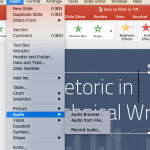
Hi! I’m Elise—your CAFE Consultant for Teaching Writing, and I’m here to help you, well, teach writing!
I am available for individual consultations on Fridays from 1:00-2:00pm in Grainger 110. Some topics we might discuss include assignment design, how to help students improve, how to see change over time, grading, peer review, and teaching reading.
The content below aims answer the following question: How might you, as an instructor in the Pillars or Perspectives, help students bridge their learning from first-year writing content to the work they’re doing in your courses?
So FIRST, what are Longwood students learning in first-year writing, or ENGL 165?
ENGL 165, taught in the Foundations level of the Civitae Core Curriculum at Longwood University, has a writing-across-the-disciplines approach. Writing in the humanities, social sciences, natural sciences, and applied fields is explored through understanding 1.) the kinds of questions scholars ask in their respective disciplines, and 2.) the research strategies they use to answer those questions.
During the course, students examine the similarities and differences in disciplinary writing conventions, or customs, through a framework of structure, language, and reference, or SLR. While these conventions vary across disciplines and genre (e.g. a lab report, a business memo, a literature review), they broadly encapsulate many writing tools, as detailed below.
In what ways do we see structure in writing?
Put broadly, structure is represented through the choices writers make to promote the readability and navigability of their documents. This is achieved through:
- Obvious and narrow writing focus that does not go off-topic
- Major points are apparent
- Sections are labeled and easy to follow
- Topic sentences indicate the central idea of the paragraph/section
- Paragraphs are unified, arguing one point
- Transitions between paragraphs/sections are utilized
- Transitional wording between details are present
- Concluding sentences summarize the central idea of the paragraph and provide closure for each point
- APA structural guidelines are adhered to (e.g. page numbers, title page, subtitles, references page, etc.)
- Overall document reflects the conventions of the assigned genre
How do we understand the use of language in writing?
Academic writing should consist of polished, original language that rarely interferes with reader comprehension and writer ethos:
- Writing reflects grammatical, punctuation, and spelling standards of Edited American English
- Appropriate tone for given audience
- Effective use of word choice and passive/active voice according to APA
What do we reference in writing, and what tools do we use to do this?
We include references in our writing to convey the results of research not only to achieve specific informational and/or persuasive purposes, but also to honor the greater conversation on a given topic. This is accomplished through:
- Opposing arguments are acknowledged and addressed, where appropriate
- Support/evidence/data relates to the major points
- Support/evidence/data is amply explained
- Effective use of in-text documentation techniques (signal phrases, parenthetical citations, etc.) to prevent plagiarism and provide a clear distinction between the student-author’s work and other’s material/ideas
- Bibliographical citations on the references page are accurate
So SECOND, how can you help students bridge their learning from ENGL 165 content to the work they’re doing in your courses?
I have two suggestions to get you started:
- In both your oral and written communication with students, shift your word choice to use structure, language, and reference when describing writing in your field. Remind students that they learned these terms in ENGL 165. Invite them to re-visit their class notes from that course and reflect on how these terms help them make sense of the writing expectations for your course.
- Create authentic writing situations in your assignments that help students conceptualize the audience, purpose, and context for which they’re composing. You might utilize Transparent Assignment Design, or TILT, to do this.
Here is the template I recommend for creating TILT-ed writing assignments:
 Loading...
Loading...
And here is an example of a TILT-ed assignment from ENGL 165 that utilizes the language of the course:
Some other ideas for strengthening your assignment descriptions for writing projects:
Consider adding a recording to your handout. Make your assignment explanation a PowerPoint slide and then add audio.  See the screenshot to the left. Select Insert, Click Audio, and you’ll see Record Audio.
See the screenshot to the left. Select Insert, Click Audio, and you’ll see Record Audio.
Or make a Studio recording in Canvas (contact DEC for the procedure). You might walk them through the sheet, extending explanations with examples. The benefit is that the student can listen again if the student desires.
